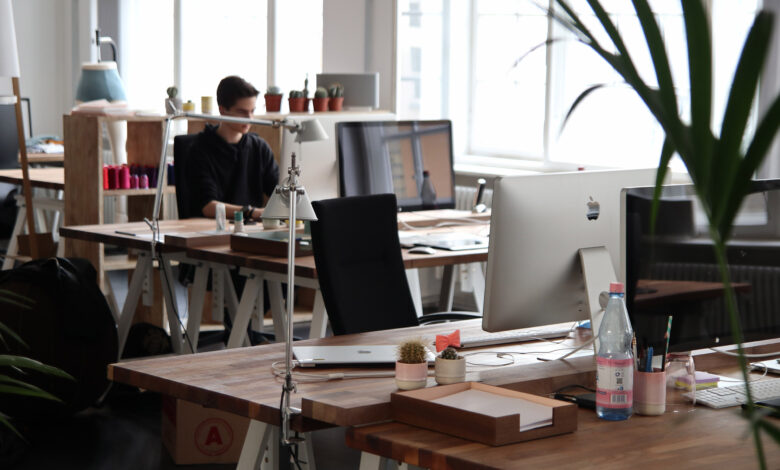Bright Ideas for Safer Work Environments

Creating a safe work environment goes beyond just a legal obligation—it’s an investment in employee well-being, productivity, and overall business success. Yet, achieving a safe workplace remains a challenge for many employers. Whether you’re managing office spaces, construction sites, or healthcare facilities, implementing effective safety measures is crucial for protecting your team and your bottom line.
This blog explores the latest trends, practical solutions, and insights into building safer work environments. From leveraging emerging technologies to incorporating human-centric approaches, we’ll provide actionable steps to help ensure your workplace is as safe as it is efficient.
Current Trends in Workplace Safety
Workplace safety measures are evolving faster than ever, thanks to technological advancements and stricter regulations. Staying ahead of these trends is essential for organizations aiming to foster safer work environments.
The Importance of Smart Technology
The rise of smart technologies like automated monitoring systems and IoT devices has revolutionized workplace safety. Smart devices can monitor areas in real-time for potential hazards, such as fire risks or air quality issues, and alert relevant personnel before issues escalate. For example, implementing a commercial lighting upgrade equipped with motion sensors or emergency lighting features can reduce risks and allow immediate response in critical scenarios.
Adapting to Evolving Regulations
Regulatory frameworks continue to adapt to new workplace challenges—such as those posed by remote work or growing climate concerns. Businesses must align with these measures to avoid penalties and maintain safe operations. Regular assessments of facilities, including lighting and equipment standards, can ensure compliance and contribute to safer workplaces. Companies like Actual Energy often help teams identify efficiency upgrades that double as safety improvements.
Practical Safety Solutions for Different Work Environments
Safety concerns differ across industries, but one constant remains—planning and the right tools save lives. Here are tailored ways to approach safety for various work environments.
Office Spaces
- Ergonomic Solutions
Proper posture and ergonomics aren’t just about comfort—they can prevent long-term physical strain. Equip workstations with adjustable chairs and desks to reduce stress injuries among employees.
- Fire Safety & Emergency Planning
Install energy-efficient emergency lighting systems through a commercial lighting upgrade, ensuring staff can safely evacuate during power outages or emergencies. Conduct regular fire drills to keep everyone prepared.
- Daily Health Practices
Air purifiers and advanced HVAC systems lower risks of airborne illnesses, while marked emergency exits offer peace of mind.
Manufacturing and Construction Sites
- Personal Protective Equipment (PPE)
From helmets to steel-toed boots, ensure employees have access to high-quality PPE. Regularly inspect and replace worn-out equipment.
- Machine Safety Protocols
Automated shutdown systems can detect malfunctions before accidents occur. Additionally, sensors installed during an energy upgrade can improve safety by alerting operators to dangerous conditions.
- Fall Protection Systems
Install guardrails, harness points, and other fall prevention mechanisms. Training employees to recognize hazards is equally critical.
Healthcare and Educational Institutions
- Infection Control Measures
Hand-in-hand with pandemic response plans, tools like UV sanitation systems remove bacteria effectively. Proper facility lighting also helps staff carry out tasks safely.
- Patient and Student Safety
Create clearly labeled walkways, install non-slip flooring, and prioritize well-lit corridors with Actual Energy solutions for efficient energy management and safety enhancement.
- Emergency Preparedness
Conduct regular drills for events such as fires, earthquakes, and violent threats to build confidence during critical moments.
Implementing Safety Initiatives
Creating a safer work environment calls for a strategic approach, rooted in fostering a safety-first culture.
Building a Safety Culture
Employees are at the heart of every safety plan. Encourage open communication to report hazards or ideas for improvement. Recognize safety adherence with incentives to foster the right mindset.
Training and Engagement
Provide mandatory safety training sessions tailored to your industry’s challenges. Hands-on workshops addressing new technologies, such as AI-powered monitoring tools, ensure a collective understanding of safety protocols.
Partnering with the Right Solutions
Consulting organizations like Actual Energy can help you identify energy-efficient upgrades that simultaneously enhance workplace safety. Whether it’s improved lighting or efficient operational systems, these adjustments can make a tangible difference.
The Future of Workplace Safety
With ongoing shifts in workplace demands, staying ahead in safety requires continuous adaptation and proactive planning.
AI-Powered Safety Monitoring
Expect increased adoption of AI tools that not only detect hazards but can also predict risks based on trends or historical data.
Customizable Lighting Systems
Future-forward energy solutions like those offered by Actual Energy are poised to integrate seamlessly with workplace safety systems. Commercial lighting upgrades will include technology capable of sensing sector-specific hazards, like chemical spills or extreme heat.
A Holistic Approach
Safety isn’t just about compliance—it’s about care. Balancing technological tools with human connection can fortify a business’s ability to meet safety challenges head-on.
Conclusion
Creating a safer work environment is more than policies and equipment—it’s about creating spaces where employees genuinely feel protected. By staying informed, adapting to trends, and putting employee well-being first, you’ll foster a workplace where people can thrive.



